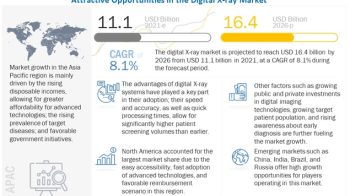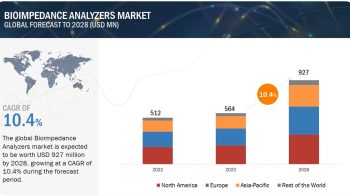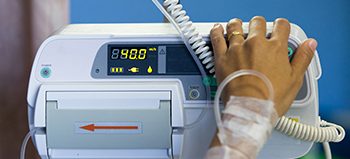Driver: Growth in biologics market
According to the American Journal of Managed Health Care, biologics form the fastest-growing segment in the pharmaceutical market. An article published by PHARMAC stated that between 2007 and 2012, the global spending on all medicines increased by 24%; in the same period, the spending on biologics increased by 367%.
According to an article published by The Economist, in the U.S., more than 900 biologics are under development for the treatment of more than 100 diseases. It is estimated that approximately USD 170 billion is spent on biologics globally, and this figure is expected to grow to approximately USD 220 billion by 2017. A major factor responsible for this trend is the rising demand for vaccines, insulin, human growth hormone, and many modern medicines used to treat cancer and other chronic diseases. As biologics are mainly administered through the injectable route, the significant growth in the biologics market is expected to drive the injectable drug delivery and prefilled syringe market in the coming years.
Biologics currently account for approximately 70% of the top-10 selling drugs in the world (Source: BioPharm International). Considering the significant demand for and potential of biologics, market players are focusing on undertaking strategic developments to leverage the growth opportunities in this market segment.
Download PDF Brochure@
https://www.marketsandmarkets.com/pdfdownloadNew.asp?id=150
A key product in the injectable drug delivery market is Humira (AbbVie Inc.), which is used for the treatment of moderate to severe rheumatoid arthritis (RA). Enbrel (Pfizer) is a prescription medicine that can be self-injected and is used for the treatment of long-term inflammatory diseases. Herceptin (Roche) is a subcutaneous injection used for the treatment of cancer.
Global Leaders:
The leading players in the market are Becton, Dickinson and Company (U.S.), Baxter International (U.S.), Pfizer (U.S.), Gerresheimer AG (Germany), Schott AG (Germany), Eli Lilly and Company (U.S.), and Terumo Corporation (Japan).
Companies are focused on organic strategies such as product launches. This strategy helped the market players to build a strong position in the market, which helped in increasing demand of customers and to expand their presence in the global market.
This research study involves the use of extensive secondary sources; directories; and databases such as Hoovers, Bloomberg Business, Factiva, and Avention; white papers; annual reports; company house documents; and SEC filings of companies.
Market Size Estimation:
For estimating the size of the injectable drug delivery market, the segmental market revenues were obtained from secondary sources through extensive primary interviews. The segment-level markets were then added up to reach the total market size of each segment (Type, Formulation Packaging, Therapeutic Application, Usage Pattern, Site of Administration, Distribution Channel, Facility of Use, and Regions). The injectable drug delivery market size was derived by adding the markets of all these segments. The total market derived through the bottom-up approach was again validated through secondary sources and interviews.
The overall market size derived by the bottom-up approach was used in the top-down procedure to estimate the size of the injectable drug delivery through the percentage splits obtained from secondary and primary research for each product segment
Growth Strategies Adopted:
The overall growth strategies adopted from 2013 to 2016 includes acquisition, agreements, collaboration, contracts, expansions, product launches, and partnerships. Companies adopted product launches and approvals to strengthen their customer base. Major players, namely, Becton, Dickinson and Company (U.S.), Baxter International (U.S.), Pfizer (U.S.), Gerresheimer AG (Germany), Schott AG (Germany), Eli Lilly and Company (U.S.), and Terumo Corporation (Japan) adopted product launches and approvals to expand their customer base and strengthen their position in the market.
Request Sample Pages@
https://www.marketsandmarkets.com/requestsampleNew.asp?id=150
Opportunity: Contraceptive injectable
Over the years, the use of injectable contraceptives has increased significantly. This increased use of injectable contraceptives can mainly be attributed to their high efficacy. Injectable contraceptives are not required to be taken daily; they can be administered once every month or once every three months and are considered to be one of the safer modes of pregnancy prevention. They prevent pregnancy 99% of the time, when administered correctly. Due to these reasons the demand for contraceptive injectables is expected to drive the market in future.
According to Guttmacher Institute, in 2012, around 1,697,000 women used injectables for contraception in the U.S. Noristerat Injection is a reversible method of prescription birth control, which is common in the U.K. and other parts of Europe.
Many new products are being launched in contraceptive injections. For instance; in September 2015, Pfizer Inc. launched Sayana Press, the first injectable contraceptive in the U.K. for administration by self-injection.
Geographical Growth Scenario:
Based on region, the injectable drug delivery market is segmented into North America, Europe, Asia, and the Rest of the World (RoW). North America is further subsegmented into the U.S. and Canada; while Europe is further subsegmented into Germany, France, the U.K., Italy, Spain, and the Rest of Europe (RoE); Asia is further subsegmented into Japan, China, India, and the Rest of Asia (RoA). Along with this, the rise in disposable income, the growing awareness of safety and comfort, and the increasing number of partnerships in this market space are also contributing to the growth.
In 2016, North America is expected to dominate the market, followed by Europe. The large share of North America is attributed to the increasing prevalence of chronic diseases and the number of companies that are focused on collaboration and partnerships to ensure the availability of high-value products.
Asia is projected to be the fastest-growing region in the injectable drug delivery market from 2016 to 2021, due to the rising incidence of chronic diseases and the growing aging population. Moreover, high penetration of self-injection technologies in Asian countries such as China, Japan, and India adds to the demand for injectable devices.
Read More Details@
https://www.marketsandmarkets.com/Market-Reports/injectable-drug-delivery-market-150.html


